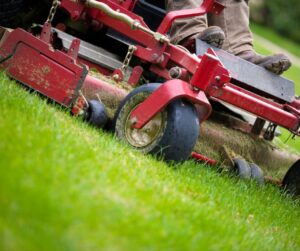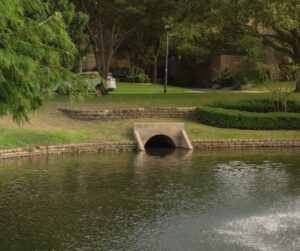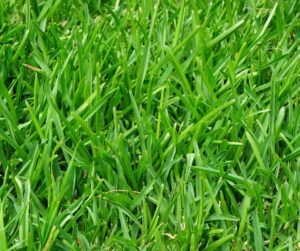Mow Monthly
 The first question I always ask the owner when looking at a detention pond is how often they mow. The answer can often provide clues about the current condition of the pond. If the pond looks unkempt and trees are growing in the bottom the answer is typically once or twice a year, or never at all.
The first question I always ask the owner when looking at a detention pond is how often they mow. The answer can often provide clues about the current condition of the pond. If the pond looks unkempt and trees are growing in the bottom the answer is typically once or twice a year, or never at all.
If the pond has a stormwater quality permit this annual chop is only done to try to show the pond is in permittable condition (photos are required for annual permit renewal). I think the idea here is that by mowing once or twice a year we can save some money on maintenance. But if you know nothing about mowing, know this-time is money.
What I mean is that mowing pricing is based on how much time it takes to complete the work. So it makes sense that if the pond is simply grass and weeds we can mow faster than if the bottom of that same pond is wet or soggy, requiring waders and weed eaters to complete the job. That wet bottom condition can easily double the amount of time spent on site, doubling the cost.
Let me further explain how this works in the real world. Commercial mowers can mow 1 ft. tall grasses at about 4 mph. As the height goes up the speed at which we can mow decreases, looking something like this:
1 ft. tall = 4 mph.
2 ft. tall = 3 mph.
3 ft. tall = 2 mph.
4 ft. tall = 1 mph.
So as you can see if we were to price out 2 mows per year the price would be 4x the monthly cost. So we can mow the pond 8 times/yr. for the same annual cost as mowing only twice. So are you really saving money? To make matters worse this mowing of 4 ft. plus vegetation can clog outfalls and strip the soil of nutrients.
By mowing monthly we can mulch the vegetation back into the soil, giving us free fertilizer (those clippings contain a lot of nitrogen). By mowing infrequently the vegetation is too large to mulch and so that large thatch migrates out of the pond into the receiving waters. The net result of frequent mowing is healthier, smaller vegetation with expansive, diverse root structures.
It’s these deep root structures that hold the soil in place and provide water during times of stress, keeping plants healthy and the pond in permittable condition.
Set Mower Blades to Their Highest Setting
This may seem like a small thing but it makes a big difference. The reasons are common sense and we’ll get into that but the question I ask myself is why do I so often see the grasses in detention pond slopes cut so short? The reason is simple and pretty silly. It all has to do with the standard operating procedure for landscape mowing.
When mowing yards and common areas, blade heights are typically set to about 3 inches. This height leaves the lawn looking smooth and manicured, which is what we want to see in our lawns. Set the blades higher than this and the lawn won’t look as good, but more importantly, it will look much too long before the next scheduled mowing.
So for aesthetic purposes it is much more desirable to set the blades low to keep the grasses looking tidy and uniform between mowings. And it’s easy to see how this behavior naturally translates to mowing ponds. It’s the same grass, so why wouldn’t you just mow this like you mow flat ground? While this seems logical it isn’t the best approach to pond mowing for several reasons.
First we have to remember that we are more than likely dealing with a detention pond that is hidden somewhere at the back of property. So aesthetics can be secondary to maintenance. This means that we don’t necessarily care if the grass is a little high between mowing events, allowing us to set the blades as high as they can go (5-6 inches). By doing this we leave more of the grass blades intact. Remember that the blades are in fact leaves which produce food for the plant.
If we remove the leaves the plant will focus energy on new leaf growth. By mowing at a higher setting we remove less leaf structure, allowing the grass to focus energy on a deeper, stronger root structure. The net result being a healthier, more resilient plant with deeper roots and a better chance of survival during the stresses of summer heat and drought conditions.
Maintain Outfall Structures
 Detention ponds are designed to “detain” stormwater for 24-72 hrs after a rain event. This is accomplished by a restrictor pipe which is a smaller (usually 6”) pipe installed inside the large outfall pipe that you can see on the floor of the pond.
Detention ponds are designed to “detain” stormwater for 24-72 hrs after a rain event. This is accomplished by a restrictor pipe which is a smaller (usually 6”) pipe installed inside the large outfall pipe that you can see on the floor of the pond.
If the pond serves as stormwater quality there is still a restrictor, but also some sort of screen or cage that prevents trash from leaving the pond. When grasses are mowed, the thatch migrates toward these outfall structures and can easily clog them. This cleaning of the outfall area is never part of the regular course of business for landscape contractors, and so expecting that these structures will be maintained is unrealistic.
The result is water backing up into the pond, creating a whole host of problems that become more difficult the longer these conditions exist. Monthly maintenance in conjunction with mowing will keep these structures clear, allowing proper drainage of the pond and less chance of clogging.
Fertilize and Overseed
 This may seem contradictory to owners who aren’t particularly happy to have a detention pond in the first place. Most owners view the detention pond as a waste of otherwise perfectly good property that can’t be built on and so can’t produce income. So why would anyone want to spend money on maintenance?
This may seem contradictory to owners who aren’t particularly happy to have a detention pond in the first place. Most owners view the detention pond as a waste of otherwise perfectly good property that can’t be built on and so can’t produce income. So why would anyone want to spend money on maintenance?
The problem is that without food, the grasses will eventually die and the pond will need to be regraded. These repairs can get quite expensive and are never planned for. With regular fertilizer and overseeding this costly expense can be eliminated.
Additionally, this maintenance can be budgeted for which means no surprise costs. And we know that property managers hate these kinds of surprises!
Add a Concrete Pilot Channel
As previously discussed, developers and owners aren’t big fans of detention ponds. This has resulted in pond slopes getting steeper and floors flatter. This is all an attempt to make the pond footprint smaller, freeing up valuable land for buildings and parking. This pressure has led to the creation of several products and processes, from vertical walls to underground detention.
To add volume, a simple concept is to flatten out the pond floor. Unfortunately that creates a drainage problem as the grade becomes inadequate to properly drain the pond, leaving the bottom soggy at best. The typical end result being a swamp full of cattails and vermin. To alleviate this we add a concrete pilot channel which looks much like a sidewalk running down the center of the pond.

In actuality the pilot channel is a flume that helps to drain stormwater to the outfall. The concept here is that water will drain much faster and more efficiently on concrete than soil, and the grade can be much flatter than with a dirt channel. Concrete pilot channels are great at draining these fairly flat pond floors. The problem is that they are costly and not mission critical and so often get cut by developers. This of course just kicks the can down the road, making it someone else’s (management) problem.
The often overlooked, and critical, reason to keep the pilot channel has to do with HVAC. Whether the property is commercial, industrial, multi family, or a school there are going to be air conditioned spaces, often thousands of square feet. Did you know that these systems create a lot of condensate? So what do we do with all of that constantly flowing water? The easiest and most convenient thing to do is tie the condensate drains into the storm system.
This solves one problem but creates a new one. Remember this is a constant flow, with great erosive potential. Ever heard of the Grand Canyon? Fortunately concrete pilot channels are a great way to manage this constant flow. They are formed up and poured with attention to grades and can’t be eroded by the flow like dirt can. And while they aren’t necessary, if you have any flowing water like condensate or on-site wastewater treatment they are essential.
If you’re having trouble with your detention pond feel free to contact us today for a no cost site assessment by one of our highly qualified team of stormwater quality professionals. We have a wealth of experience in creatively solving drainage issues and would love the opportunity to help.
